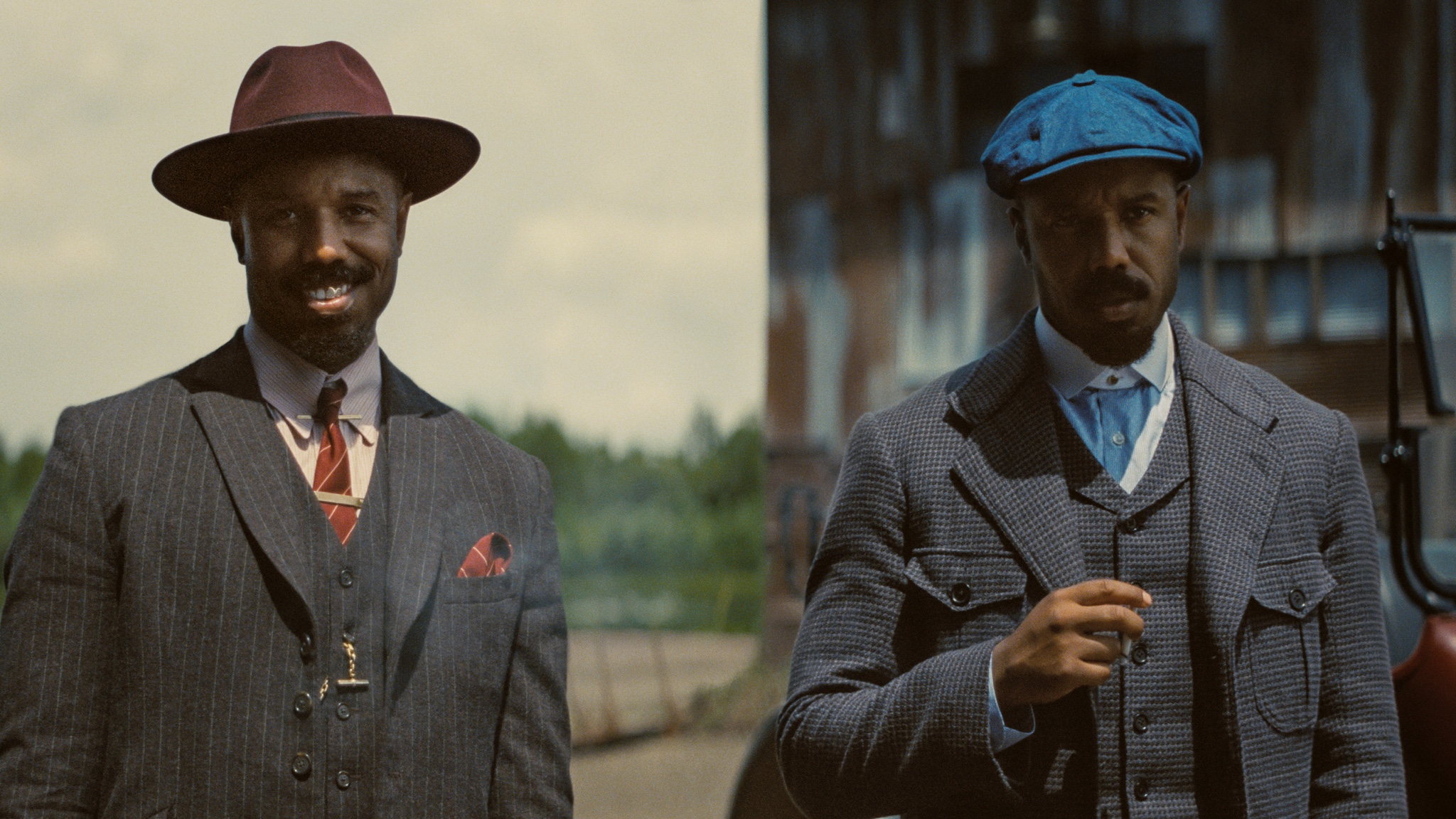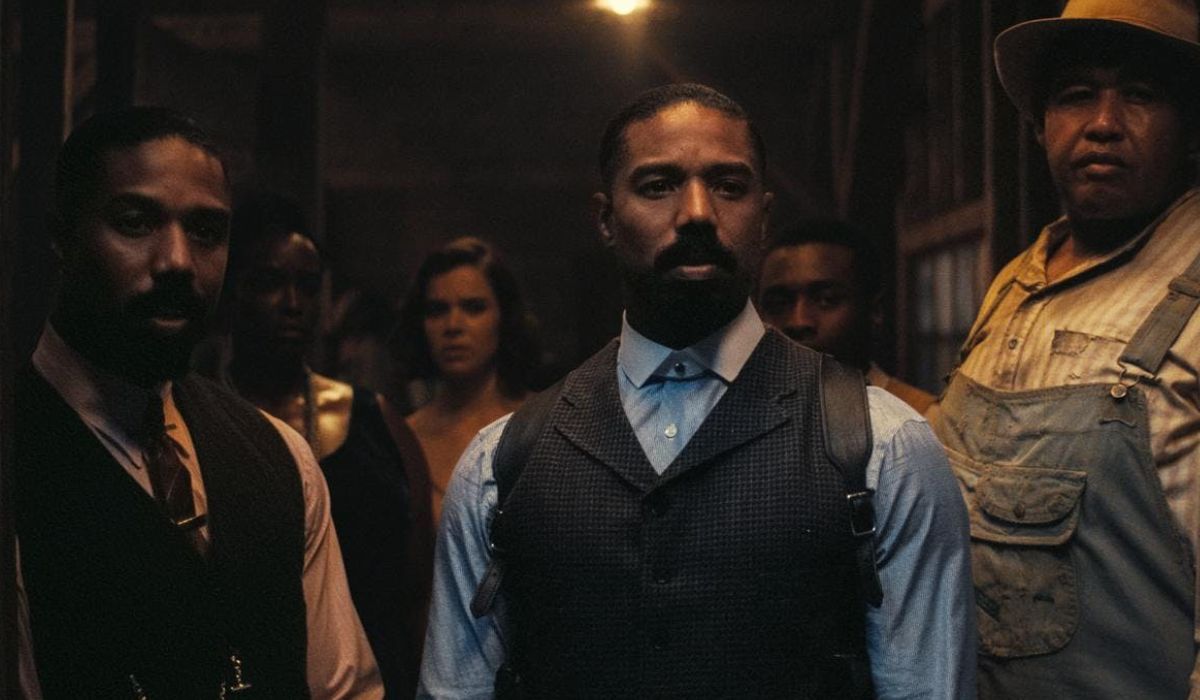
One intriguing method in filmmaking history is the portrayal of an actor playing multiple characters within a single scene, engaging in self-interaction. This technique, dating back to cinema’s origins, has consistently left viewers spellbound, adding an additional dimension of difficulty that merges creativity, technical prowess, and novelty in an industry striving for authenticity. However, what has evolved over time isn’t merely the creation of new tools; it’s the transformation of this device from a basic visual trick to a potent storytelling mechanism. And that’s precisely what the movie “Sinners” achieves with exceptional skill.
In older times, films that aimed to depict an actor playing various roles simultaneously faced numerous technical challenges. As there was no digital technology, sophisticated editing tools, or CGI available to streamline the process of having one actor appear on screen together, directors had to resort to ingenious methods. They utilized optical illusions, double exposures, stationary cameras, and painstaking editing to achieve their vision. The actor also needed immense concentration and vitality to deliver the same scene repeatedly with unwavering precision – it was a challenging endeavor. Distinctive makeup, costumes, and other visual cues were crucial in helping audiences distinguish between the characters. “Coming to America,” featuring Eddie Murphy portraying four roles, serves as an excellent demonstration of how effective this approach can be.

Regardless of their effectiveness, these techniques had evident drawbacks. It was challenging, if not impossible, to physically interact different characters portrayed by an actor. Scenes requiring touch or object exchange needed meticulous planning and often relied heavily on intricate editing to preserve the illusion. This approach led to a sense of artificiality that, while once acceptable, now feels clumsy and outdated. As a movie strays further from resembling reality, it runs the risk of being perceived as low quality, which significantly impacts viewers’ immersion in the narrative.
Despite obstacles, cinematic enchantment consistently advances. As digital effects and sophisticated post-production techniques emerged, this traditional artform underwent a significant transformation. In essence, we can say that the movie magic continued to progress by leaps and bounds. For example, in the film Back to the Future II, Michael J. Fox began using digital compositing to intermingle with multiple versions of Marty McFly on screen. Over time, innovations such as motion capture technology, green-screen work, and digital editing allowed filmmakers unprecedented creative freedom. They no longer needed to maintain a stationary camera or edit around objects. Instead, actors could freely move, engage with each other, and even touch their duplicates in a manner that appeared genuine.

Since the release of “Sinners” in cinemas, it’s been a massive hit. Ryan Coogler’s movie has garnered heaps of positive feedback from both critics and viewers, but what truly sets it apart is its groundbreaking use of cinematic technique. The portrayal of Michael B. Jordan as twin brothers Smoke and Stack is particularly impressive, setting a new standard. What truly distinguishes “Sinners” is its masterful fusion of advanced technology with deeply emotional acting – this unique combination makes the film compelling from the very first scene. To be honest, witnessing the twin brothers on screen together for the first time is enough to make you stop and appreciate the craftsmanship, as the effect is astonishingly seamless.
It’s noteworthy to mention that the team didn’t solely depend on visual effects for their execution. Instead, Jordan meticulously crafted two distinct characters, starting from their body language, dialogue rhythms, and minute facial expressions. Even in scenes where they both appear together, it’s effortless to distinguish one brother from another. In more complex sequences, a stand-in was used for physical interplay, but the emotional depth largely originates from Jordan’s acting prowess. He skillfully highlights the tension and bond between the brothers, making their relationship central to the performance.
During an interview with Rotten Tomatoes, Jordan described his experience as anything but a leisurely stroll. The process included halo cameras, facial recognition technology, and a complex multi-camera setup that allowed for minimal errors. As expected, there were hurdles to overcome. He detailed how he had to pay special attention not to speak over another actor’s line or inadvertently stand where his character’s brother was supposed to be during scene transitions.

Ultimately, the outcome is an immersive experience where viewers are instantly captivated without any reservations or distractions. The traditional “actor playing dual roles” tactic no longer appears as a trick or gimmick, but rather a genuine storytelling method with emotional depth. Essentially, this technique, which once required the audience to ‘go along’ despite knowing it wasn’t real, feels seamless in Sinners. There’s no need for disbelief suspension, because it simply works flawlessly. While we all understand that there is only one Jordan, Sinners might momentarily make you question that fact.
In numerous aspects, it’s accurate to assert that Coogler’s film has transcended the norm, not just refining an established method but reshaping the standard itself. This production demonstrates the immense potential when state-of-the-art technology and exceptional acting unite. It represents a groundbreaking leap that seems almost untouchable. For cinema enthusiasts, this development is electrifying, as masterful narratives call for daring creativity, and Sinners embodies both with panache and brilliance.
Sinners is now available on digital.
Read More
- PI PREDICTION. PI cryptocurrency
- WCT PREDICTION. WCT cryptocurrency
- Gold Rate Forecast
- Guide: 18 PS5, PS4 Games You Should Buy in PS Store’s Extended Play Sale
- LPT PREDICTION. LPT cryptocurrency
- Elden Ring Nightreign Recluse guide and abilities explained
- Solo Leveling Arise Tawata Kanae Guide
- Despite Bitcoin’s $64K surprise, some major concerns persist
- Chrishell Stause’s Dig at Ex-Husband Justin Hartley Sparks Backlash
- Playmates’ Power Rangers Toyline Teaser Reveals First Lineup of Figures
2025-06-06 23:12